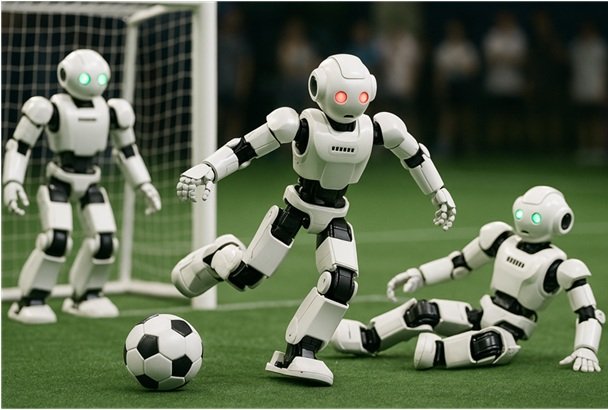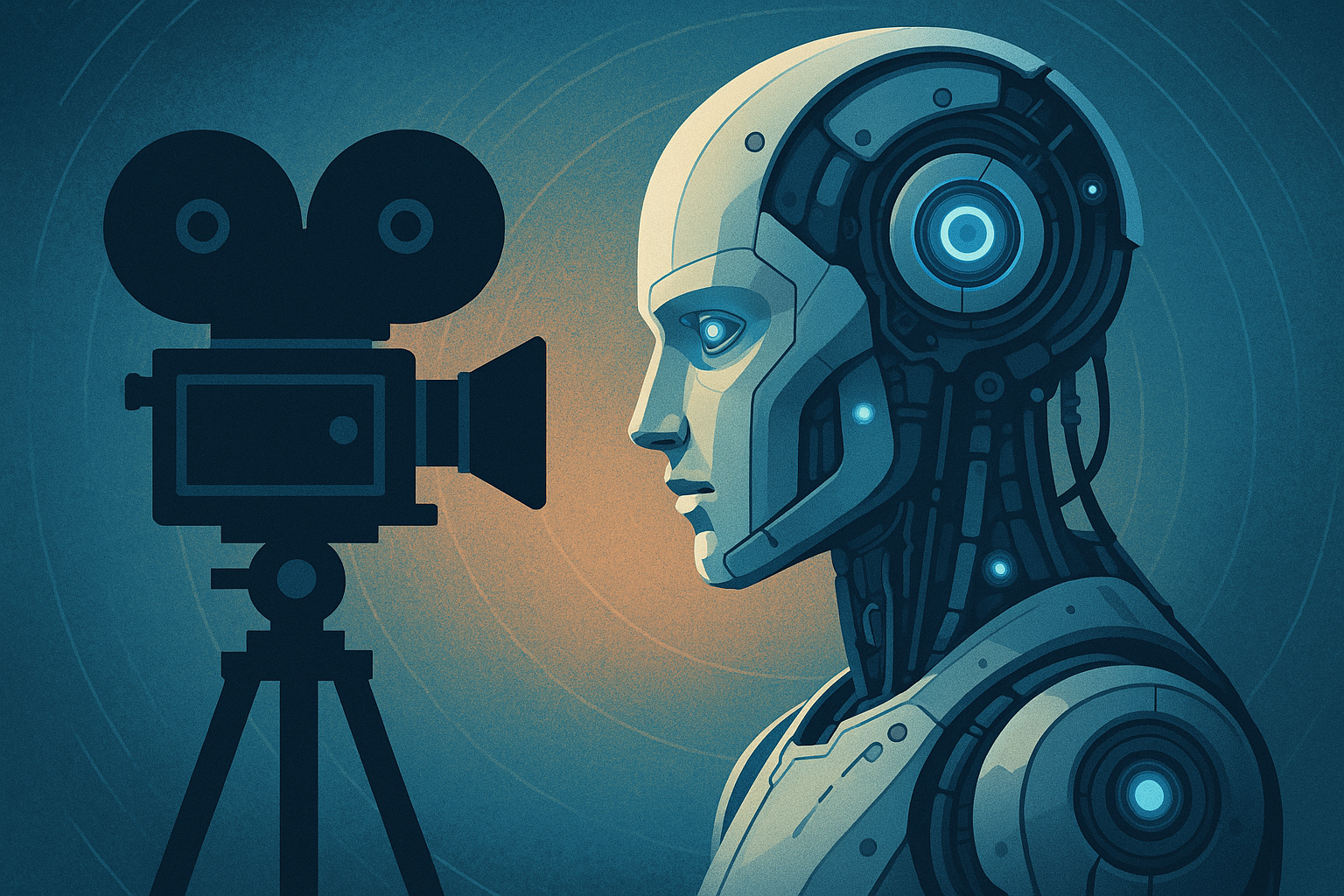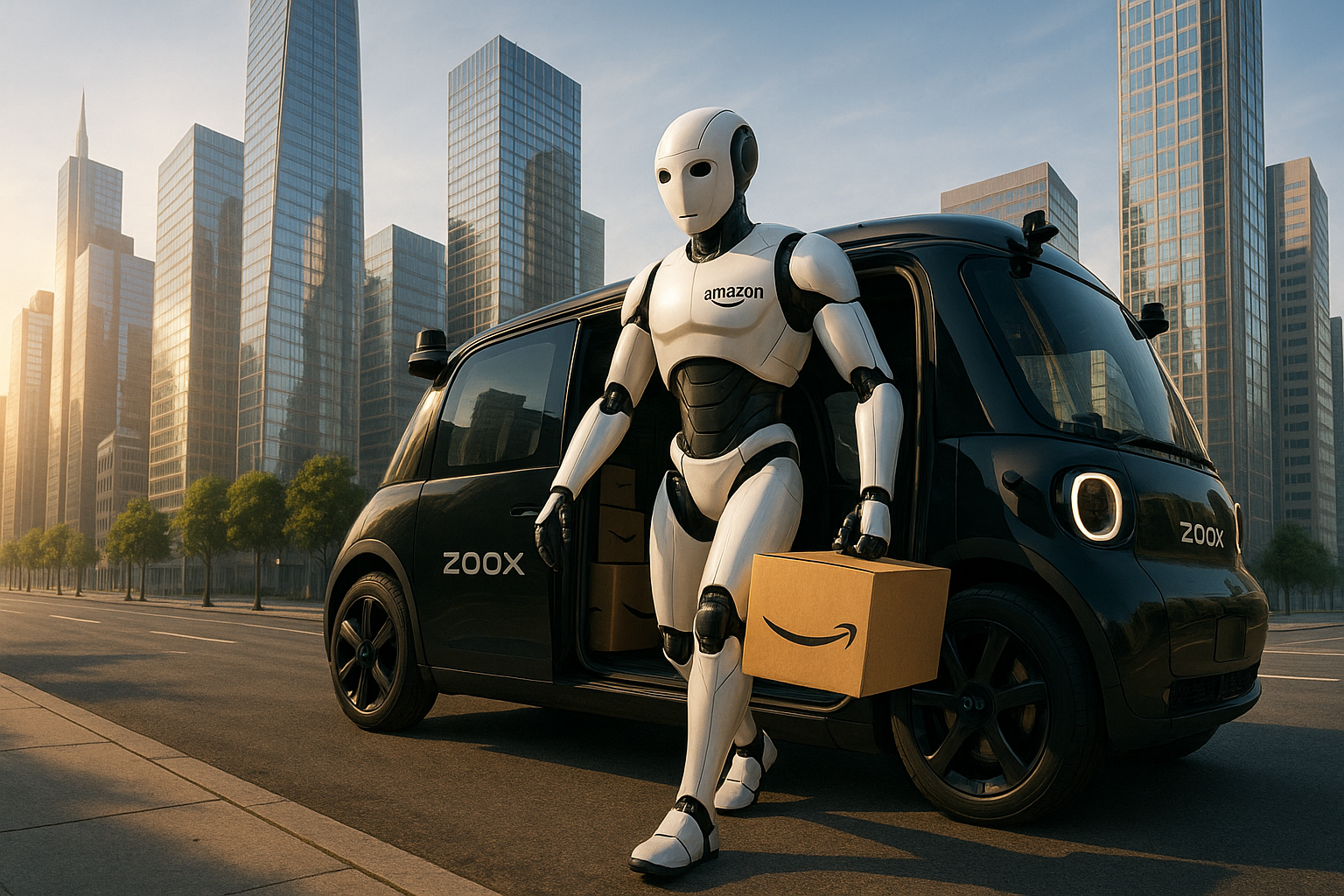On Saturday, June 28, something strange and fascinating happened in Beijing: a football match with no human players. Instead, the field was filled with humanoid robots, powered by artificial intelligence, playing in a chaotic 3-on-3 tournament that was part spectacle, part science experiment.
There were no dazzling runs like those of Mbappé. Instead, the game offered a parade of stumbles, clumsy kicks, and bizarre own goals. It might have looked like a comedy sketch but beneath the surface was something far more serious.

A Real-World Lab for Robotics
The tournament, created by Booster Robotics, a startup founded by Cheng Hao, brought together four university teams. The big winner was THU Robotics from Tsinghua University, who beat the Mountain Sea team from China Agricultural University 5–3 in the final.
Each team programmed its own robots, developing custom algorithms to control movement, reactions, and decision-making. But progress comes with its pitfalls literally. Two robots had to be carried off the field on stretchers, unable to stand after falling. The moment was funny, but it also highlighted how challenging bipedal robotics still is.
Why Use Sports to Train AI?
Cheng Hao explains it clearly: sports are unpredictable. A football pitch is dynamic and full of chaos perfect conditions for testing a robot’s agility, coordination, and quick thinking. It’s not just about scoring goals; it’s about teaching machines how to adapt to the real world.
A Billion-Dollar Industry in the Making
And it’s not just for fun. According to ABI Research, the humanoid robotics market could surpass $17 billion by 2027, fueled by demand in fields like healthcare, logistics, security, and entertainment.
Meanwhile, the RoboCup Federation which has been organizing robot football “World Cups” since 1997 has set itself an ambitious goal: by 2050, they want a team of humanoid robots to beat the human world champions. It sounds like sci-fi, but tournaments like this are moving us one step closer.
Inspiring the Next Generation of Innovators
Beyond the headlines, these robot matches serve another purpose: getting young people excited about STEM (science, technology, engineering, and math). Robot football combines creativity, coding, mechanics, and problem-solving. It’s hands-on, engaging, and educational an ideal gateway to high-tech careers.
Conclusion: The Future Falls, but Moves Forward
The robots fall. They miss. They fumble. But with each game, they get better.
Robot football may not be ready for the Champions League yet, but it’s becoming a powerful testing ground for AI and autonomous systems. And while today’s machines are more likely to trip than score a hat-trick, the gap between man and machine is slowly closing.




